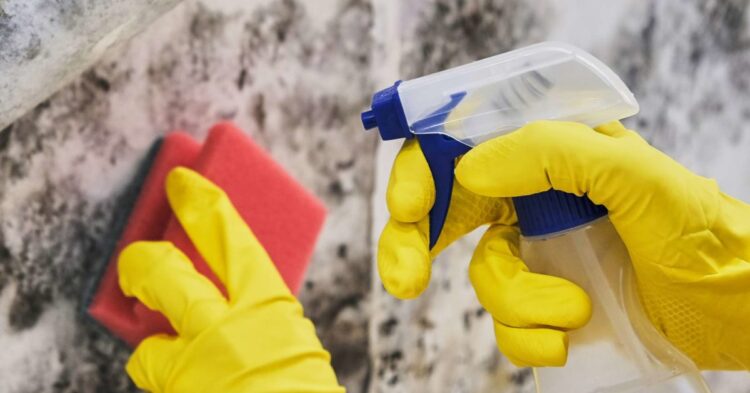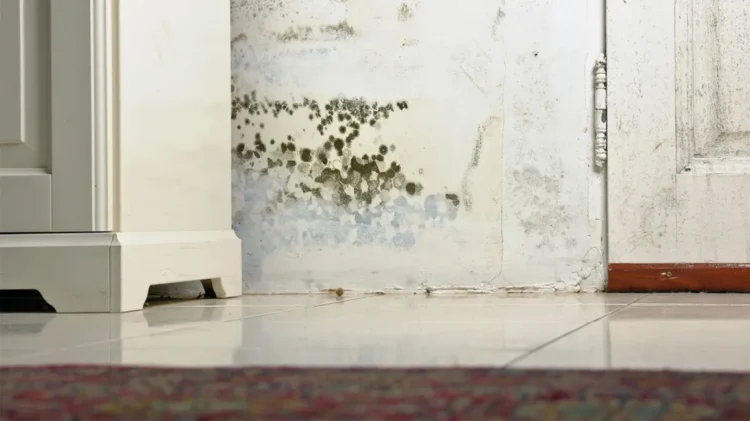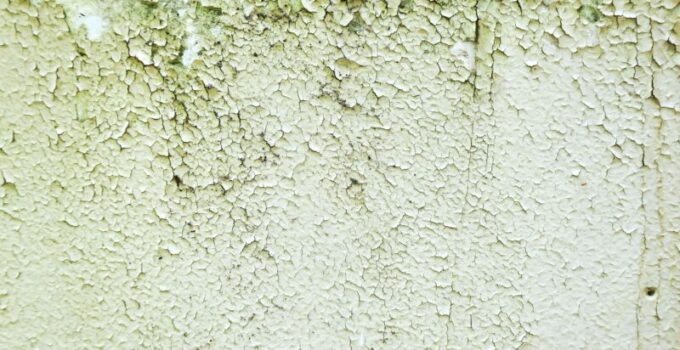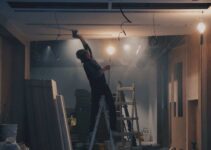Mold is a hidden danger in many homes. It can cause serious damage to all parts of your home, from walls and ceilings to furniture and windows. This can result in often irreparable damage to your home’s structure. What’s more, mold can pose serious health risks to occupants. This can be especially troubling for people suffering from respiratory allergies or asthma, as mold amplifies the uncomfortable issues associated with these conditions. The most susceptible populations are the very young and the elderly, but young, otherwise healthy adults can also come down with sinus infections, eye irritation and generalized respiratory discomfort. If you’ve noticed any of these signs in yourself, check the following tips to remove mold from your household, and prevent it from making a comeback.
Page Contents
Look for warning signs
Mold is not always visible. Sometimes it hides and spreads underneath the surface of walls for a long time before becoming noticeable. But that doesn’t mean that mold is undetectable. One of the first things you’ll notice is a heavy, musty smell in your home. If you can’t locate the source of this unpleasant odor, it’s very likely to be mold. Bubbling paint or wallpaper that peels off indicates that you may be dealing with a mildew problem. Moisture distorts the finishing on your walls and distorts their appearance. You can notice clothing that feels slippery and clammy to the touch, or if you spot dark specks on furniture, take that as an indication of mold infestation.
Keep the house dry
When you’re fighting off mildew, the best weapon is to keep your home dry. When you eliminate moisture as much as possible, you prevent mold. If it’s already a problem in your home, keeping things dry will stop it from spreading further and affecting other areas. Lowering indoor humidity is not difficult to achieve. Remember to properly ventilate rooms, particularly ones where moisture tends to build up, like bathrooms and kitchens. Don’t leave the wet laundry to dry inside, and take it outside to ventilate properly. This keeps your home safe from mold and gives you fresh, nice-smelling clothes.
If you live in a particularly humid climate, you should refrain from boiling water unless absolutely necessary. The resulting steam gets absorbed into the air, and if you’re already dealing with unfavorable weather conditions, you are only exacerbating the problem. Another place where you should limit hot water use is the shower. While hot showers can be very relaxing, if you’re struggling with getting mold out of your house, you should opt for colder water when you’re taking your next bath. And make sure to wipe down the shower or bathtub walls after each use.
Don’t skip regular cleaning

Source: medicalnewstoday.com
Regular home cleaning is a vital step in keeping mold in check. Carpets can frequently harbor mold, so it’s important to vacuum regularly. If you want to make sure you are as protected as possible, you can buy antimicrobial carpets designed from fabrics that can withstand bacteria and mildew growth. You should also take your carpets for a professional cleaning session at least once a year. If you’re looking to clean mold away, you can safely use chlorine bleach or vinegar. Just spray it over the affected area, let it sit for thirty minutes to an hour, then scrub it clean. During this process, you should wear protective gloves and goggles and cover your airways with a mask to guard yourself against both mold spores and the fumes of corrosive cleaning agents. Both can irritate your mouth and nose’s thin, sensitive mucous membranes and reach deeper to affect other organs like your lungs and stomach.
If you notice mold has begun to form on your clothing, the safest option is to take the garments to a dry cleaner, and machine washing could worsen the problem and completely ruin the fabric. To avoid mildew forming on clothes in the future, avoid storage in damp rooms.
Manage post-fire damage
In the aftermath of a house fire, your household is more vulnerable to mold. Firefighting efforts create a substantial amount of moisture which sets in the structure of the building. Fires that start because of a liquid, particularly in the kitchen, also lead to the formation of water vapors. Get help from watermoldfire.net Restoration if you’re confronted with this particular problem. They have substantial experience restoring homes that fires have damaged, and they are also adept at mitigating the difficulties ensuing from a conflagration.
They use professional, proven technologies to get your house back to its previous state. They remove damaged beyond repair materials and gadgets in your home will be removed, so they don’t act as vectors for mildew to attach itself to. The area will be rigorously dried with the help of high-power fans and dehumidifiers to help water evaporate faster and more efficiently. After that, every facet will be disinfected and deodorized. The former kills mildew, while the latter removes the stagnant odors left behind. After this process has been completed, the restoration of your house can commence. With experts handling the rebuilding effort, you’ll notice your household resembling its former self in no time. You can contact the fire damage restoration Denver to help you easily restore your property.
Use mold-killing products

Source: healthline.com
When looking for mold-killing products, you need to examine the market before making a purchase carefully. Pick something effective, but not too astringent, lest you have to leave your house after cleaning. Certain parts and items of your home are more vulnerable to mildew and therefore necessitate increased care. Shower curtains and tiles are particularly significant. Grout lines, the spaces between tiles, are a known hotbed for mold formation. Make sure to scrub them clean with an old toothbrush and a strong anti-mold cleaning agent. Both humidifiers and dehumidifiers need weekly cleaning. Use a specialized product here, too, to kill mold in all those difficult to reach spaces. Windowsills attract a lot of mildew as well. If you are forever wiping away condensation from the windows, take your time to clean them consistently.
Mold can be very pesky and challenging to eliminate. But if you persevere and arm yourself with the right tools, you are bound to succeed.





